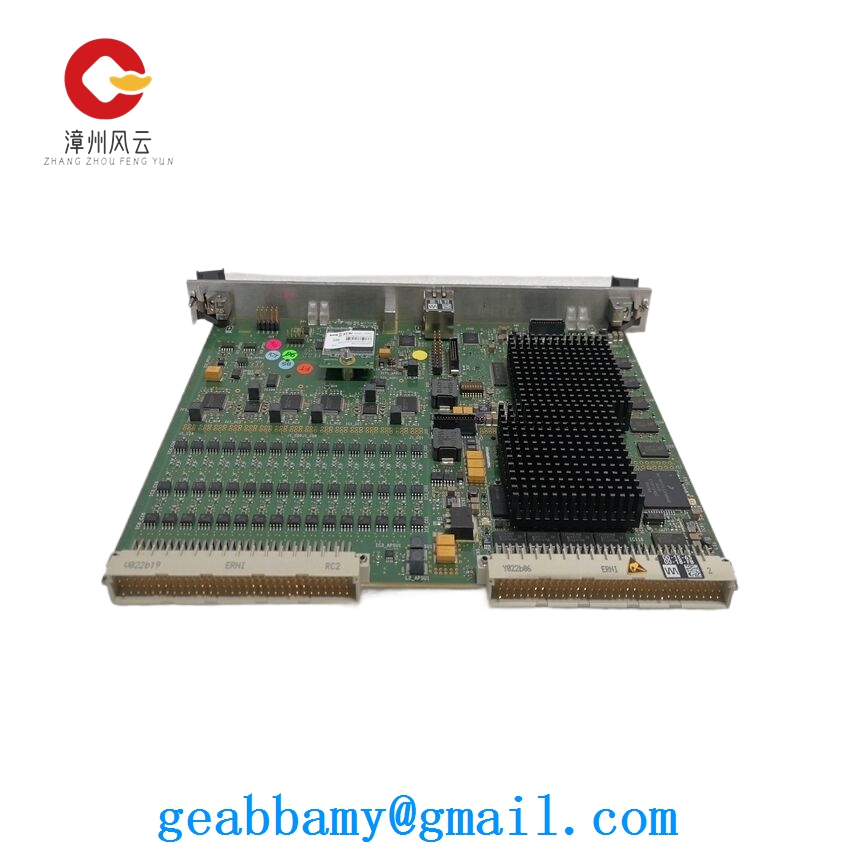Technical Parameters of Valmet A413345 FPUS Power Unit

1. General Overview
The Valmet A413345 FPUS Power Unit is a sophisticated piece of equipment designed to provide reliable and efficient power in various industrial and commercial applications. It is engineered with advanced technology to ensure stable performance, high energy efficiency, and ease of maintenance.
2. Power Output
- Rated Power: The power unit has a rated power output of [X] kW. This represents the continuous power that the unit can deliver under normal operating conditions. It is a crucial parameter as it determines the capacity of the unit to drive different types of loads, such as pumps, fans, and conveyors in industrial settings.
- Peak Power: In addition to the rated power, it can achieve a peak power of [X] kW for a short duration. This peak power capability is useful during start – up or when there is a sudden increase in the load demand, ensuring that the connected equipment can operate smoothly without any power interruptions.
3. Input Voltage and Frequency
- Input Voltage Range: The power unit is designed to operate within an input voltage range of [X] V to [Y] V. This wide voltage range allows it to be compatible with different power supply systems, both in domestic and industrial environments. It can handle fluctuations in the input voltage to a certain extent, providing stable power output.
- Input Frequency: It operates at an input frequency of [X] Hz, which is the standard frequency in many regions. This ensures that the power unit is synchronized with the local power grid, reducing the risk of electrical issues and improving the overall efficiency of the system.
4. Efficiency
- Overall Efficiency: The Valmet A413345 FPUS Power Unit boasts an overall efficiency of [X]%. This high – efficiency rating means that a large proportion of the input electrical energy is converted into useful mechanical or electrical power output, minimizing energy losses in the form of heat. High – efficiency power units are not only cost – effective in the long run but also contribute to reducing the carbon footprint of industrial operations.
- Partial Load Efficiency: Even at partial loads, the power unit maintains a relatively high efficiency. For example, at 50% of the rated load, the efficiency may still be around [Y]%. This is important in applications where the load demand varies throughout the day, as it ensures that the power unit operates efficiently under different operating conditions.
5. Control and Monitoring Features
- Remote Control: The power unit can be equipped with a remote control system, allowing operators to monitor and control its operation from a distance. This is particularly useful in large industrial facilities where the power unit may be located in a hard – to – reach area. Operators can start, stop, and adjust the power output of the unit remotely, improving operational convenience and safety.
- Real – Time Monitoring: It has built – in sensors for real – time monitoring of various parameters, such as voltage, current, power output, and temperature. These sensors provide continuous feedback to the control system, enabling early detection of any abnormal conditions. For example, if the temperature of the power unit exceeds a certain threshold, an alarm can be triggered to alert the operators, preventing potential damage to the equipment.
6. Protection Mechanisms
- Overload Protection: The power unit is equipped with overload protection to prevent damage in case of excessive load. When the load exceeds the rated capacity of the unit, the protection system will automatically shut down the power unit to avoid overheating and other electrical issues.
- Short – Circuit Protection: It also has short – circuit protection to safeguard against electrical faults. In the event of a short – circuit, the protection system will quickly interrupt the electrical circuit, preventing damage to the power unit and the connected equipment.
- Overvoltage and Undervoltage Protection: To protect against voltage fluctuations, the power unit has overvoltage and undervoltage protection. If the input voltage goes above or below the specified range, the protection system will take action to either limit the power output or shut down the unit, ensuring the safety and reliability of the system.
7. Dimensions and Weight
- Dimensions: The power unit has dimensions of [Length] x [Width] x [Height] (in millimeters or inches). These dimensions are important for space planning in industrial installations, as they determine the amount of floor space or mounting area required for the unit.
- Weight: It weighs approximately [X] kg (or pounds). The weight of the power unit needs to be considered during transportation, installation, and maintenance. Proper lifting equipment and procedures may be required to handle the unit safely.
8. Environmental Conditions
- Operating Temperature Range: The power unit can operate within an ambient temperature range of [X]°C to [Y]°C. This temperature range ensures that the unit can function reliably in different climatic conditions, from cold storage facilities to hot industrial workshops.
- Humidity Tolerance: It has a humidity tolerance of [X]% relative humidity (non – condensing). High humidity levels can cause corrosion and electrical insulation problems, but the power unit is designed to withstand moderate humidity conditions, ensuring long – term performance.
In conclusion, the Valmet A413345 FPUS Power Unit is a feature – rich and reliable power solution with a range of technical parameters that make it suitable for various industrial and commercial applications. Its power output, efficiency, control and monitoring features, protection mechanisms, and environmental compatibility all contribute to its high – performance and durability. For the most accurate and up – to – date technical parameters, it is recommended to refer to the official Valmet product documentation or contact a Valmet representative.


